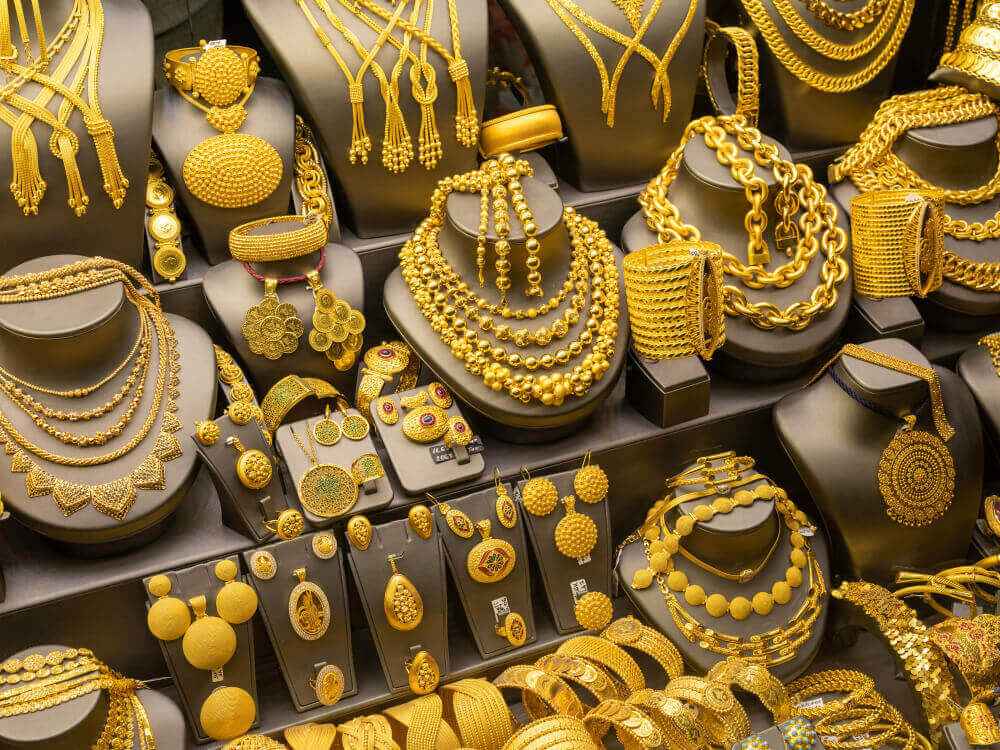Glitter or Gold? Exploring How the Jewelry Market Influences XAUUSD Dynamics
In the dazzling world of precious metals, gold holds a spot that’s as lustrous as its physical form. Beyond its sheer aesthetic appeal, gold’s economic significance cannot be overstated, especially when it comes to its impact on the XAUUSD dynamics. This pairing represents the gold (XAU) to U.S. dollar (USD) exchange rate, a critical metric for investors, economists, and jewelry aficionados alike. But what’s truly fascinating is the intricate dance between the jewelry market and gold prices. Let’s dive deep into this glittering relationship and uncover how it shapes the broader economic landscape.
Understanding XAUUSD Dynamics
Before we delve into the heart of the matter, it’s crucial to grasp what XAUUSD signifies. In essence, it’s the global benchmark for gold prices, expressed in terms of how much one ounce of gold is worth in U.S. dollars. This rate fluctuates based on a myriad of factors, including market demand, geopolitical stability, inflation rates, and more. It’s the pulse of the gold market, constantly monitored by investors and financial analysts across the globe.
The dynamics of XAUUSD are influenced by both tangible and intangible elements. On one hand, you have the physical demand for gold in industries and jewelry making, and on the other, the speculative investments in gold as a safe-haven asset. These dual forces create a market that’s as volatile as it is captivating.
The Sparkle That Moves Markets: The Jewelry Industry’s Role

Direct Impact on Gold Demand
The jewelry industry is a colossal consumer of gold, accounting for a significant portion of the total gold demand annually. This insatiable appetite for gold is not just about adorning oneself with the latest trends; it reflects cultural traditions, economic status, and personal milestones. When the demand for gold jewelry increases, it directly boosts the need for raw gold, subsequently affecting the XAUUSD price. The more people crave that sparkle, the more gold’s value ascends on the global stage.
Seasonal and Geographic Variations
It’s fascinating to observe how seasonal and geographic factors play into this dynamic. Consider the wedding season in countries like India and China, two of the largest gold-consuming nations. There’s a tangible spike in gold prices leading up to these periods, illustrating the direct correlation between cultural practices and global gold prices. Similarly, festival seasons across various cultures can lead to increased purchases of gold jewelry, further influencing the XAUUSD rates.
Economic Indicators and Gold Prices

Inflation: The Hidden Catalyst
Inflation is often seen as the nemesis of purchasing power, but it has a unique relationship with gold. As inflation rates climb, the value of currency depreciates. Gold, however, maintains its value, making it an attractive investment. This inherent quality of gold as a hedge against inflation further intertwines the jewelry market with XAUUSD dynamics. As more investors flock to gold during inflationary periods, the demand for gold for jewelry purposes also competes with investment demands, driving prices up.
Geopolitical Stability and Investor Sentiment
The geopolitical landscape can send ripples across the gold market. In times of political unrest or economic uncertainty, investors and consumers alike gravitate towards gold as a safe haven. This surge in demand can lead to increased prices, affecting both the investment market and the jewelry sector. The interplay between investor sentiment and jewelry demand creates a feedback loop, where one influences the other and vice versa, showcasing the complex relationship between global events and gold prices.
The Technological Tinge: How Innovation Affects Gold Demand

Sustainable Mining and Ethical Sourcing
The push towards sustainable mining and ethical sourcing of gold is reshaping the jewelry market. Consumers are increasingly aware of the environmental and ethical implications of their purchases, including gold jewelry. This shift in consumer behavior influences gold demand, as more jewelry brands commit to using responsibly sourced gold. As the industry moves towards transparency and sustainability, it could lead to a reevaluation of gold sourcing practices, potentially impacting XAUUSD dynamics by altering supply chains and demand patterns.
Advancements in Jewelry Design and Manufacturing
Technological advancements in jewelry design and manufacturing are also playing a pivotal role. With the advent of 3D printing and other innovative techniques, the possibilities for gold usage in jewelry are expanding. These technologies not only allow for more intricate designs but also improve efficiency and reduce waste. As the barriers to creating gold jewelry lower, the market could see an influx of gold-based products, influencing both the demand for gold and its price on the global stage.
The Future of Gold: Trends to Watch

The Digital Gold Rush
In an increasingly digital world, the concept of gold is evolving. Cryptocurrencies and blockchain technology are introducing new ways to invest in and trade gold, offering digital gold tokens that represent physical gold. This digital gold rush could redefine the relationship between the jewelry market and XAUUSD dynamics, as traditional and digital forms of gold investment intersect.
Emerging Markets and Gold Consumption
Emerging markets are set to play a crucial role in the future of gold demand. As economies in Asia, Africa, and South America continue to grow, so does their appetite for gold jewelry. This demographic shift could significantly influence XAUUSD prices, as millions of new consumers enter the market, driven by rising incomes and cultural affinity for gold.
Conclusion
The interplay between the jewelry market and XAUUSD dynamics is a multifaceted saga of economics, culture, and innovation. The demand for gold jewelry does not merely reflect societal trends but actively shapes the global economic landscape through its impact on gold prices. As we look towards the future, the relationship between glitter and gold will continue to evolve, driven by technological advancements, shifts in consumer behavior, and the global economic climate. For investors, understanding this dynamic is crucial for navigating the gold market, while for consumers, it offers a glimpse into the intricate web that links their personal adornments to the broader economic forces at play.
FAQs
1. How exactly does the demand for gold jewelry influence XAUUSD prices?
The demand for gold jewelry directly impacts XAUUSD prices by increasing the overall demand for gold. When jewelry manufacturers and consumers buy more gold, it reduces the supply available in the market, driving up prices. This is particularly evident during peak buying seasons, such as wedding and festival seasons in major gold-consuming countries.
2. Can geopolitical events really affect gold prices?
Yes, geopolitical events can significantly affect gold prices. During times of political unrest or economic uncertainty, gold is often seen as a safe-haven investment. This increased demand for gold as a protective investment can drive up prices, affecting both the investment and jewelry sectors.
3. Are cryptocurrencies competing with gold as an investment?
Cryptocurrencies are increasingly viewed as an alternative to traditional investments like gold, especially among younger generations. However, gold has a long history as a stable store of value, something that volatile cryptocurrencies have yet to fully establish. While they do compete, many investors see them as complementary rather than directly competitive.
4. How are advancements in technology changing the gold jewelry market?
Advancements in technology, such as 3D printing and sustainable mining practices, are making gold jewelry more accessible and environmentally friendly. These technologies allow for more intricate and personalized designs, potentially increasing demand. They also address ethical and environmental concerns, appealing to a more conscientious consumer base.
5. What role do emerging markets play in the global demand for gold?
Emerging markets are crucial drivers of global gold demand, particularly for jewelry. As these economies grow and individual incomes rise, more people can afford gold jewelry. This growing consumer base in emerging markets is expected to significantly influence future gold prices and demand, underscoring the global nature of the gold market.




